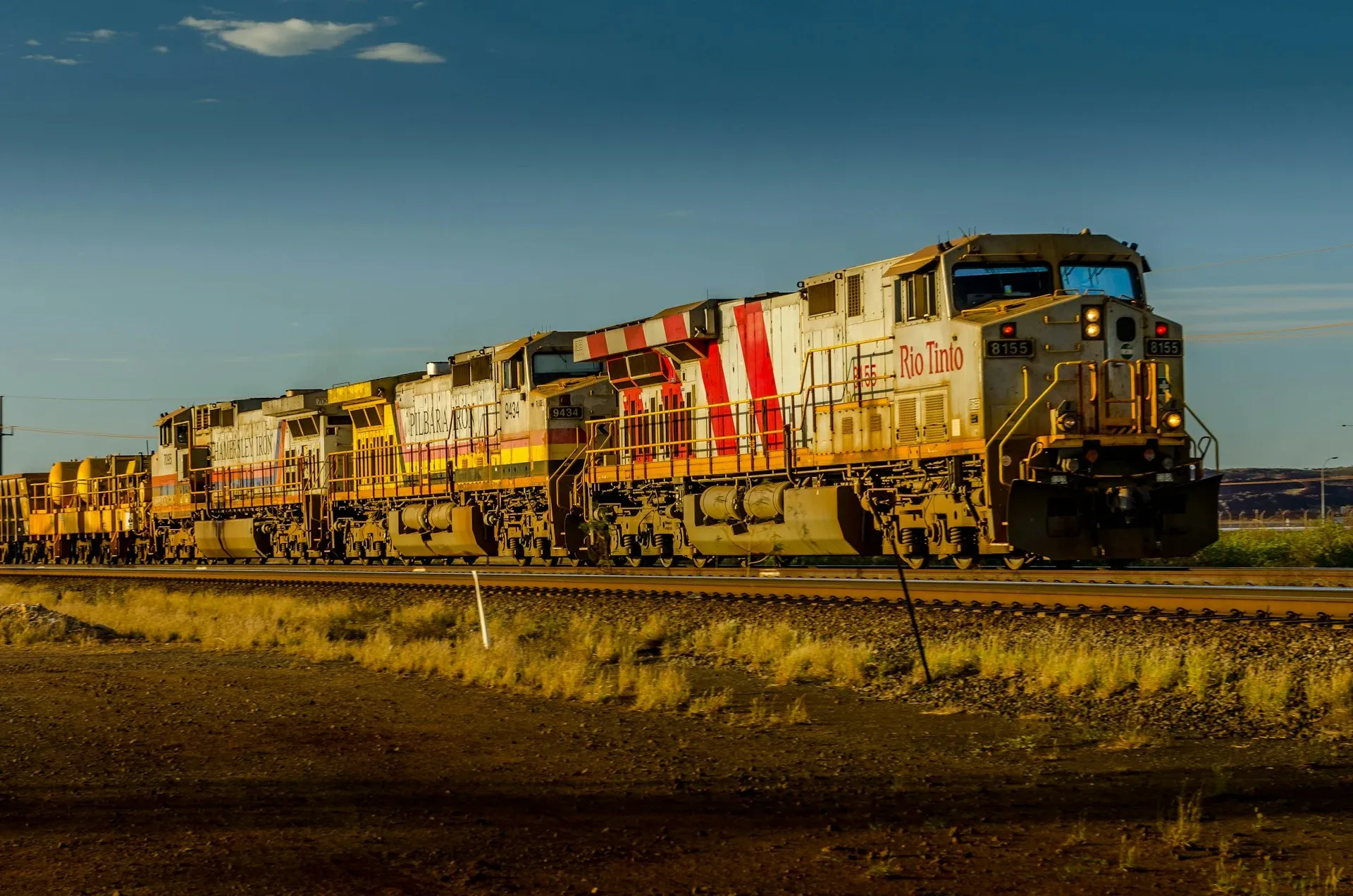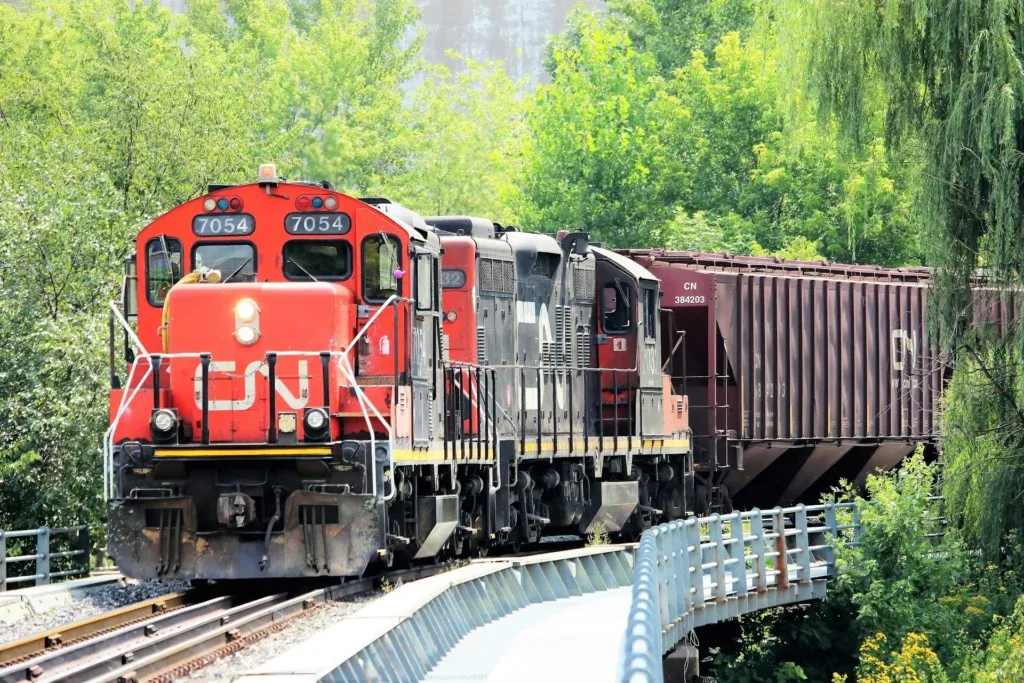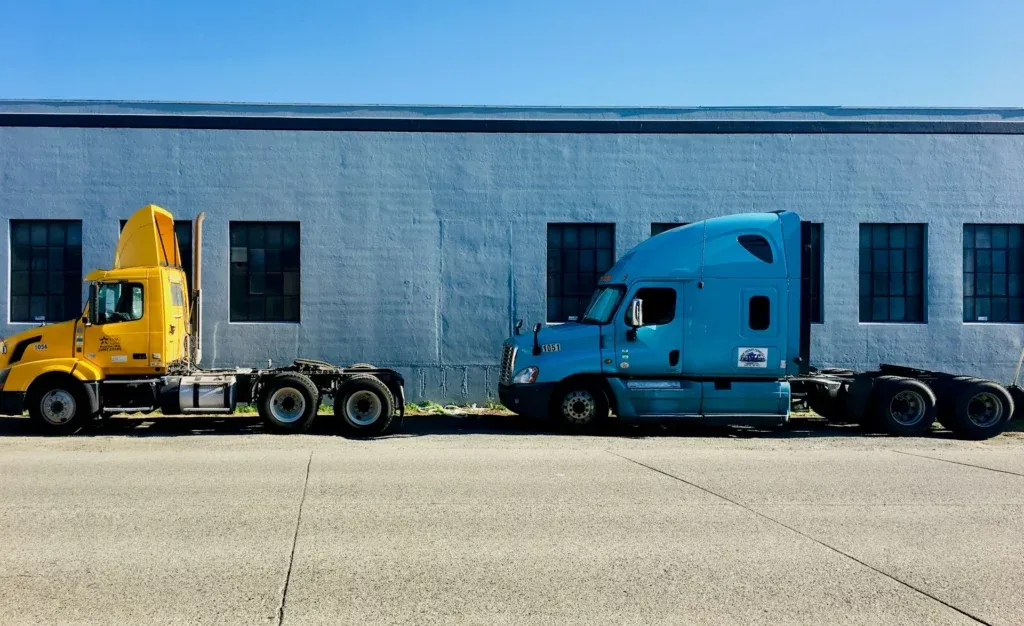Rail vs. Road: Why Rail Freight is the Smart Choice for Cross-Border Shipping

Cross-border shipping between the United States and Canada is a critical component of North American trade, with billions of dollars worth of goods moving between the two countries each year. A huge network of highways and railways connecting these two neighboring nations ensures that goods arrive on time, efficiently, and reliably. Thus, with both being the largest trading partners, businesses have to work out complex logistical arrangements to make their operations smooth and compliant with cross-border rules.
Making the choice of transport mode is quite important, one that impacts the cost, speed, and reliability of the shipment. When businesses are associated with cross-border trade, the main debate revolves around two broad options: rail or road. Each of them has its advantages and challenges, and the choice between them can make a big difference in everything from delivery times to the environmental impact. Having this in mind, one can then ask oneself: is rail or road the most sustainable option for a company with cross-border freight considerations in their logistics strategy?
Current Landscape of Cross-Border Shipping
It is the biggest and most dynamic trading relationship worldwide, and two-way trade in goods between the United States and Canada in 2023 touched around $750 billion in value. This consisted of U.S. exports to Canada at $450 billion and Canadian exports to the U.S. at $300 billion. This represents a very large volume of trade, and hence, efficient cross-border logistics is not just necessary but urgently so, to support the economies of the two countries.
Road and rail are the most popular modes of cross-border freight transport. Trucks are used in about sixty percent of this total trade value due to their flexibility and reach in both countries. Less flexible but important in the transport of bulk goods and heavy commodities such as automotive parts, oil, and agricultural products, rail represented about 15% of the trade value. Each mode is integral to the supply chains crossing the U.S.-Canada border but faces unique challenges.
Cross-border logistics involves numerous challenges, from customs regulations to border security protocols and then to delays and congestion that can form at some of the most important crossings. What is more, in addition to the type of cargo dealt with, the regulatory environments are complex with documentation requirements, tariffs, and inspections. Moreover, there could be many infrastructure constraints and bottlenecks at key border crossings, leading to long and unpredictable delays, resulting in disturbances of supply chains and costs that are increased. In addition, companies are also faced with fluctuating fuel prices, a shortage of drivers within the trucking industry, and stringent environmental regulations that might push them toward one transportation mode or another. These are, of course, overcome through strategic logistics in a manner that assesses the most cost-effective and time-effective method for cross-border freight transportation: road versus rail.

Advantages of Rail Freight for Cross-Border Shipping
For businesses aiming to improve their logistics, rail freight offers a number of appealing advantages for cross-border shipping. Because of its cost-effectiveness and its ability to move massive amounts of cargo at once, transportation costs by rail can be significantly reduced. The capacity and dependability of rail networks guarantee reliable and timely delivery, and the increased security and safety measures related to rail freight give businesses transporting sensitive or valuable items across borders a piece of mind.
Cost Efficiency
For long-distance cross-border shipping, rail freight is more affordable than road freight, particularly when transferring big volumes of freight. Compared to trucks, trains can carry a far larger payload, which results in lower expenses per ton-mile. For the transportation of bulk goods like chemicals, minerals, and agricultural materials, rail is extremely good. Railways also profit from economies of scale, which lower the cost per unit as shipments increase in volume. Additionally, rail is more fuel-efficient than trucks, which lowers overall transportation costs, especially when traveling large distances.
Environmental Benefits
The environmental impact of rail freight is among its most strong advantages. When compared to road transportation, rail transportation produces fewer greenhouse gas emissions per ton-mile. For equal cargo weights, trains produce up to 75% less CO2 than vehicles due to their higher fuel efficiency. As businesses work toward achieving sustainability goals and lessening their environmental impact, having a smaller carbon footprint becomes more crucial. Businesses can help reduce air pollution and their carbon footprint by selecting rail over vehicle travel, in line with the increasing demands of both consumers and regulators for more environmentally friendly operations.
Capacity and Reliability
Railways offer substantial capacity advantages, making them ideal for moving large volumes of freight consistently and efficiently. Trains can go across vast distances without interruption and with fewer delays than trucks, which are constrained by traffic and driver availability. Reliability is increased by the fact that rail networks are less vulnerable to weather-related disruptions than road transportation. Also, because rail lines are dedicated, trains may follow more consistent timetables, which lowers the possibility of delays and guarantees that cargo arrives on time.
Security and Safety
In general, rail freight is considered to be more secure and safer than road transit. Compared to trucks on open highways, trains are less exposed to theft and accidents since they run on fixed tracks with regulated access. In addition, railcars’ enclosed and segmented design offers superior protection for cargo during transportation, lowering the possibility of damage. In addition, railways are subject to strict safety standards and surveillance in order to reduce the likelihood of incidents. Improving security is especially crucial when shipping hazardous or costly goods across international borders.

Challenges of Road Freight for Cross-Border Shipping
Although road freight is still a common option for cross-border transportation between the United States and Canada, it has a number of drawbacks that can affect the effectiveness and affordability of logistics operations. Businesses must be aware of these challenges when they consider the advantages and disadvantages of various forms of transportation for their international shipping needs.
Higher Costs
One of the primary challenges of road freight is its higher cost compared to rail, especially for long-distance shipments. Due to volume limitations, trucks need to make numerous trips in order to move the same quantity of cargo that a single train can. The total cost is also influenced by the cost of maintaining a fleet of trucks and by changes in fuel prices. Road transport is a less economical choice for businesses trying to maximize their logistics budget because it also entails tolls, driver compensation, and possible overtime fees, all of which can add up.
Environmental Impact
Compared to rail, road freight has a far bigger environmental impact. Trucks contribute to air pollution and climate change by using more fuel per ton-mile and releasing more greenhouse gasses into the atmosphere. The environmental impact of road transport becomes a more urgent concern as environmental regulations tighten and corporations are under greater pressure to decrease their carbon footprint. It could be difficult for businesses that place a high priority on sustainability to defend the continuous use of road freight for cross-border shipments.
Logistical Limitations
A number of logistical limitations can reduce the effectiveness of road freight. Traffic congestion frequently affects trucks, particularly in the vicinity of large border crossings, and can cause delays that might upset supply chains. Larger freight might need to be divided across several vehicles due to trucks’ restricted capacity, which complicates logistics management. In addition, road conditions, disruptions caused by bad weather, and driver availability can all affect road transport reliability, making it less predictable than rail.
Regulatory Challenges
Dealing with a complicated web of rules, such as customs processes, documentation requirements, and adherence to other countries’ transportation legislation, is necessary when shipping goods cross-border by road. There might be major differences in these regulations between the United States and Canada, which adds to the administrative burden on businesses. Transportation times and expenses may increase if there are delays at border crossings because of inspections or problems with paperwork. Road freight is a more difficult alternative for cross-border shipment because of the additional complication of having to adhere to different safety and environmental norms on both sides of the border.
Conclusion
Choosing the right mode of transportation for cross-border shipping between the USA and Canada is crucial for optimizing costs, efficiency, and environmental impact. While rail freight offers significant advantages in terms of cost savings, environmental benefits, and reliability, the best choice ultimately depends on your specific needs and the nature of your cargo.
At Carolina Logistics, we understand that every shipment is unique. Whether you prefer rail or road, our team of experts is here to help you navigate the complexities of cross-border transportation, ensuring your goods reach their destination efficiently and securely. Reach out to us today to explore the best shipping solutions tailored to your business.s. This will lead to more sustainable and efficient logistics operations, helping you meet your business goals and support long-term growth.
